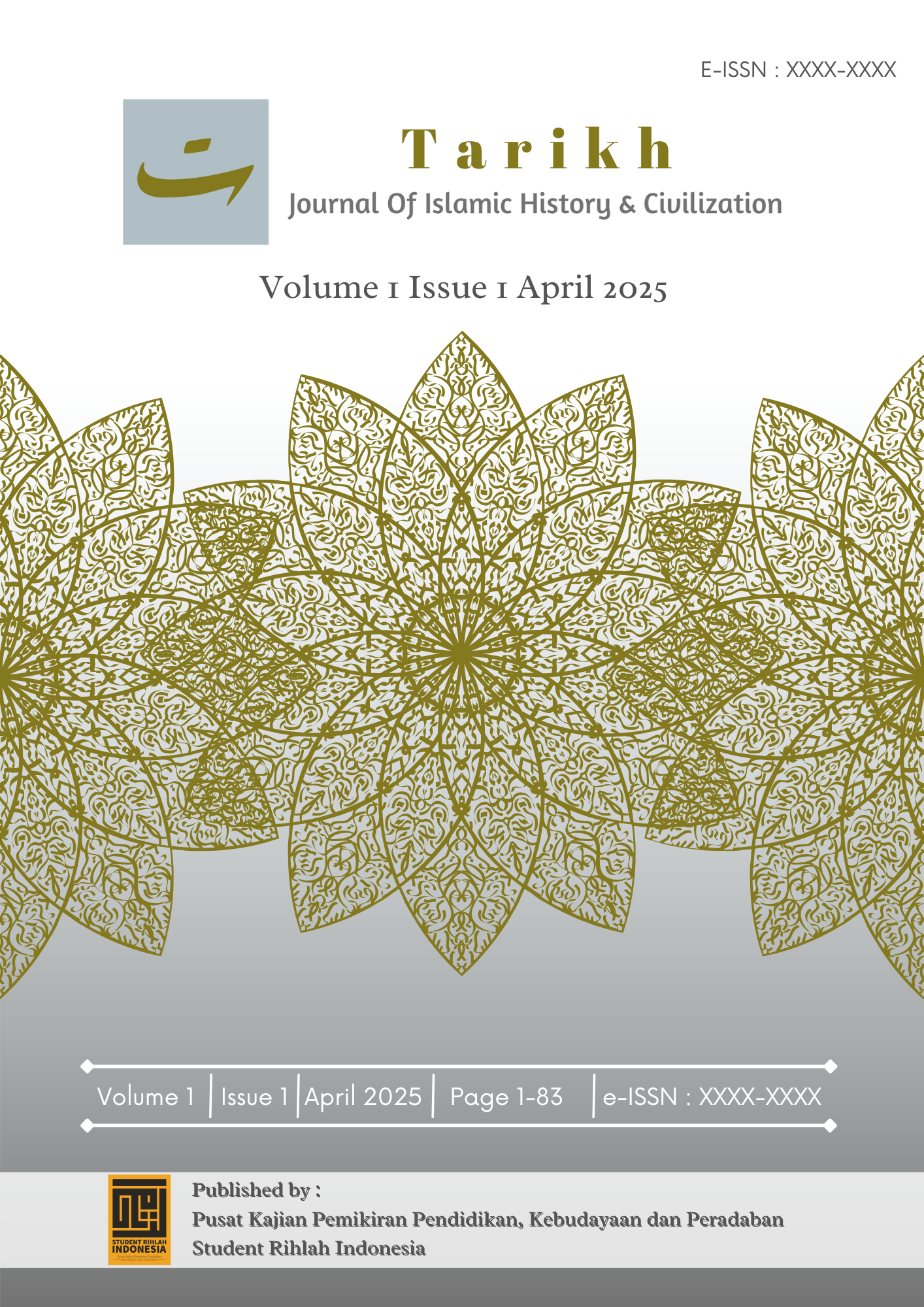Analisis Sejarah Interaksi Peradaban Cina dengan Islam
Main Article Content
Abstract
This research aims to describe the interaction of Chinese civilization with islām. The method used is descriptive analysis. Based on the results of the analysis, the interaction between the Chinese people and the Arabs occurred during the 5th century AD, which is long before the religion of Islām was born. One of the famous Muslim leaders in the process of spreading Islām in China is Sa'ād Ibn Abī Waqās through the “Silk Road”. Islām has been rooted in China for a long time, starting from the Tang Dynasty to the Manchu Dynasty. The golden age of Muslims was during the Ming Dynasty. Unfortunately, when China was transformed into the People's Republic of China (PRC), with an anti-islām communist system, the islām community in the country was like chicks who lost their mother, because all the teachings of islām began to cease to function at that time. However, the spirit of the Muslim minority in the region has never faded. Islām, which was introduced by devout and intelligent merchants centuries ago, has been deeply rooted and influential in many aspects of Muslim life in China, not only in thought, but also in the value system and norms of the Muslim community in China today. Whether we realize it or not, the Chinese people have adopted a lot of islām knowledge from time to time.
Downloads
Article Details
Section

This work is licensed under a Creative Commons Attribution-ShareAlike 4.0 International License.
You are free to:
- Share — copy and redistribute the material in any medium or format for any purpose, even commercially.
- Adapt — remix, transform, and build upon the material for any purpose, even commercially.
- The licensor cannot revoke these freedoms as long as you follow the license terms.
Under the following terms:
- Attribution — You must give appropriate credit , provide a link to the license, and indicate if changes were made . You may do so in any reasonable manner, but not in any way that suggests the licensor endorses you or your use.
- ShareAlike — If you remix, transform, or build upon the material, you must distribute your contributions under the same license as the original.
- No additional restrictions — You may not apply legal terms or technological measures that legally restrict others from doing anything the license permits.
Notices:
You do not have to comply with the license for elements of the material in the public domain or where your use is permitted by an applicable exception or limitation .
No warranties are given. The license may not give you all of the permissions necessary for your intended use. For example, other rights such as publicity, privacy, or moral rights may limit how you use the material.
How to Cite
References
Asmanidar. (2015). Potret Tamaddun Islam di Negeri “Tirai Bambu” (Mulai dari Masa Dinasti Tang hingga Republik Rakyat China). Jurnal Ilmiah Islam Futura, 14(2), 190–217.
Dillon, M. (2000). China’s Islamic Frontiers: Borders and Identities. Boundary and Security Bulletin, 8(4), 97–104.
Faridha, R., & Ali, N. H. (2015). ISLAM DI CINA PADA MASA PEMERINTAHAN REPUBLIK NASIONALIS. Tamaddun, XIV(2), 1–38.
Feng, C. Q. (2013). The Study of Islam and Islam Economic Thought in China School of Philosophy and Religious Studies , Minzu University of China ,. 3(1), 21–27. https://doi.org/10.5829/idosi.wjihc.2013.3.1.3103
Macklin, M. G., & Lewin, J. (2015). The rivers of civilization. Quaternary Science Reviews, 114, 228–244. https://doi.org/10.1016/j.quascirev.2015.02.004
Mukan, N. M., Bulekbayev, S. B., Kurmanaliyeva, A. D., Abzhalov, S. U., & Meirbayev, B. B. (2016). Confessional peculiarity of Chinese Islam. International Journal of Environmental and Science Education, 11(15), 7906–7915.
Xia, G. (2014). ScienceDirect China as a " Civilization-State " : A Historical and Comparative Interpretation. Procedia - Social and Behavioral Sciences, 140, 43–47. https://doi.org/10.1016/j.sbspro.2014.04.384
Xingpei, Y. (2010). The historical revelations from the Chinese civilization. Procedia - Social and Behavioral Sciences, 2(5), 7006–7011. https://doi.org/10.1016/j.sbspro.2010.05.054
